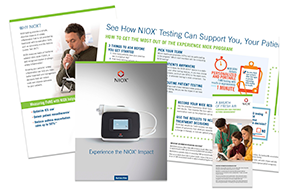If 2014 had a downside for Fingerpaint, it was an upbeat one: Like a well-fed python, the agency is struggling to digest all its growth. And that’s fine with founder Ed Mitzen, who says revenues rose to $20.3 million in 2014, up from $18.7 million in 2013.
 Calling it “a year for the ages,” the Saratoga Springs, NY–based agency opened a new office in Villanova, PA, and—after much hunting—acquired Olson Communications, a PR shop in Phoenix. Head count jumped from 86 to 109. And, of course, new business was the engine that propelled it all, with the agency adding 12 accounts, including Celgene, Eagle Pharmaceuticals, Helius Medical Technologies, New Haven Pharmaceuticals, Locemia Solutions and Ferring Pharmaceuticals. And it was named (again) to a local “best places to work” list, and made Inc.‘s list of fastest-growing companies (again).
Calling it “a year for the ages,” the Saratoga Springs, NY–based agency opened a new office in Villanova, PA, and—after much hunting—acquired Olson Communications, a PR shop in Phoenix. Head count jumped from 86 to 109. And, of course, new business was the engine that propelled it all, with the agency adding 12 accounts, including Celgene, Eagle Pharmaceuticals, Helius Medical Technologies, New Haven Pharmaceuticals, Locemia Solutions and Ferring Pharmaceuticals. And it was named (again) to a local “best places to work” list, and made Inc.‘s list of fastest-growing companies (again).
 “We don’t want to run faster than our legs can carry us, and we’re looking forward to absorbing all these gains,” Mitzen says. “We don’t want to get greedy and run around pitching everything until we’ve had a chance to operationalize everything we’ve added.”
“We don’t want to run faster than our legs can carry us, and we’re looking forward to absorbing all these gains,” Mitzen says. “We don’t want to get greedy and run around pitching everything until we’ve had a chance to operationalize everything we’ve added.”
He admits there have been more than a few moments when he’s had to pinch himself. There was the champagne toast in Scottsdale, sealing the Olson deal. There was the thrill of walking into the new Villanova office, looking up at the sign and thinking, “We are a real company now.” To him, it’s a vindication that the agency’s unconventional business model—“we’re 100% independent, everyone owns stock, there’s not much emphasis on titles or offices”—is working.
For Andy Pyfer, strategy, the biggest moment was winning Med Ad News‘ Agency of the Year, with 20 of the agency staff attending the black-tie event. Sure, it was a nice party. “But it was just incredibly meaningful and validating. Ed often says advertising is the ultimate team sport, and it’s true. We are building something special here.”
And of course, there are healthcare developments Mitzen is crazy about, including work for client Helius Medical Technologies’ PoNS device, or Portable Neuromodulation Stimulation. “It’s a tongue device that helps restimulate and reprogram the brain and is in clinical trials for treating traumatic brain injuries, especially in the military,” he says. “It’s one of those things that makes our work so rewarding, as opposed to introducing—let’s say—the fifth cholesterol-lowering agent.
So far business in 2015 is up 15%, and looking ahead both he and Pyfer believe there will be plenty of new opportunities to make that kind of a difference, often with a digital edge. “Patient engagement is everything,” says Pyfer. “And digital is where it all has to start. If you’re not thinking digitally from the beginning, you’re kind of lost. A year from now, we will all be talking about the ways pharma is stretching the bounds of social- and community-type programs, using social-media and digital campaigns in new ways. They will go well beyond where we’ve seen them.”
And what makes it even better, Mitzen adds, is the insights that come from increasingly rich healthcare analytics. “It’s given us the ability to get more fully involved in social-media and content development and handed us the ability to shift on the fly,” he says. “It really is a fun time to be in this industry.”
From the July 01, 2015 Issue of MM+M - Medical Marketing and Media








